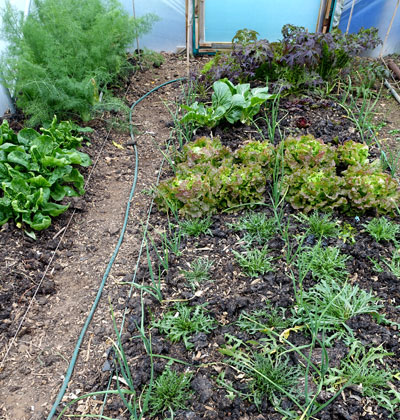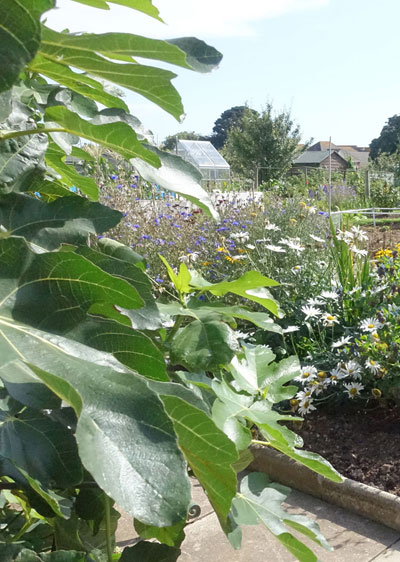
Potatoes Now that you’ve got your seed potatoes they need to be kept in a cool light place to develop small 1-2cm dark green sprouts before you plant them. This is known as chitting and it will get them off to a flying start when you begin planting next month.
Although you will stagger planting the different types of potato (earlies, maincrop etc) they all need to be chitted now.
Check your planting plan to make sure that you are not putting potatoes where you grew them last year. This will guard against passing on diseases in the soil. They prefer a slightly acid soil (PH5-6). Preferably this will be ground that has been manured and certainly not limed.
Also check that you have allocated enough space for them (you will be surprised how much space they need). First earlies need 30cm(12inch) spaces and second earlies and maincrop need 38cm(15inch) spaces. To have room to earth up between each row make rows 75cm(30inch) apart.
Potatoes can be planted in holes, drills or a trench so you could be preparing a trench this month in readiness. It needs to be deep enough to allow 15cms(6inches) of soil above the potatoes.
Autumn Raspberries These must be cut to the ground now if you haven’t already done this. They will produce fruit in the autumn on new canes that grow in the summer.
Potash This is important for crop quality promoting balanced growth and disease resistance.
As fruit bushes come out of dormancy a top dressing of sulphate of potash will increase root health and give better fruit production later.
As fruit bush roots often grow very near the surface it is a good idea to mulch with home made compost or old grow bags after a top dressing. This will keep the roots moist and help them absorb nutrients.
Winter wash Apples, pears and vine plants will already have leaf buds but they are not breaking yet so this is your last chance to spray with a winter tree wash. This is plant oil based and will kill any pest eggs over wintering on your trees.
Sweet peas Some sweet peas are good for bees and all will brighten your plot. Sow them indoors this month ready to pot on in March when frosts are finished.

Indoors Remember to keep an eye out for pests in the greenhouse/polytunnel and ventilate on warm days to reduce the risk of moulds.
Outside Keep checking brassica netting against hungry pigeons and remove dead leaves which will encourage moulds at this time of year.
Bees and other pollinators A recent study at Bristol University has shown that allotments are very successful in supporting a wide variety of pollinators because of their mix of fruit,veg and flowers, with allotments having ten times the bee population of parks. Many plants traditionally viewed as weeds like buttercups, thistles and ox-eye daisies are particularly attractive to pollinators and so worth encouraging on a part of your plot. There are also many nectar rich garden flowers that will support pollinators including buddleja and marigolds. Ericas are an early flowering plant that bees love and lavender is another worth planting now to attract bees when it flowers in the summer.
